| Back To News |
Cameras of the Year Finale: Best Overall and Special Awards
posted Friday, January 2, 2015 at 5:26 PM EDT
The Imaging Resource Camera of the Year Awards
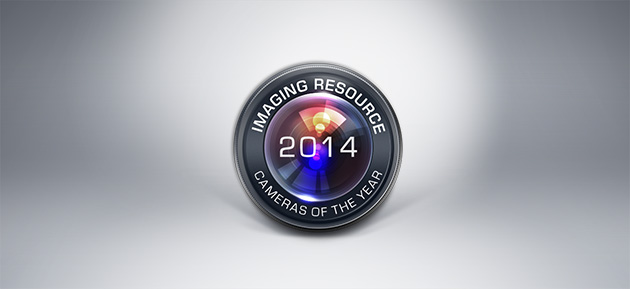
The Grand Finale! Best Overall and Special Awards
The conclusion of our Camera of the Year Awards brings us to our final award categories: Best Overall Achievement, Best New Technology and Most Unique New Camera. In such an incredible year for photographers of every stripe, it wasn't easy to decide on these awards. But decide we did, highlighting everything from focusing technology to a fascinating new approach to sensor design. And in the Overall Achievement category, we recognize a DSLR, a mirrorless camera and a compact camera, incredible tools all. Read on for all the details...
Camera of the Year, Overall Achievement: Nikon D810
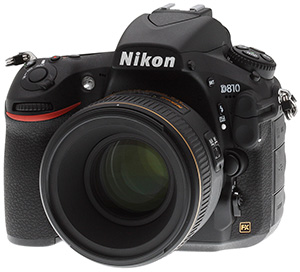
Back in 2012, Nikon turned heads with the D800 (Nikon D800 vs D810) and D800E (Nikon D800E vs D810), a pair of closely-related cameras that offered medium-format resolution from a 35mm full frame sensor in an excellent pro-grade body. Two years later, it's removed the need to choose between them, consolidating the duo in a single model -- the Nikon D810 -- and what a beauty of a camera it is!
If you want the maximum possible image quality without moving to medium-format, the 36.3-megapixel Nikon D810 is a very safe bet indeed. With a tuned variant of the same image sensor used in the earlier cameras, and with no anti-aliasing filter (or need to cancel the filter out as in the D800), the D810 offers the pairing of spectacular resolution and an extremely wide sensitivity range -- expandable to encompass everything from ISO 32 to 51,200 equivalents.
The Nikon D810 is capable of exquisite detail, and to help you capture as much of it as possible, now has an electronic first curtain shutter function which ensures there's no shutter shock before the exposure starts. And the D810 offers even greater performance than its predecessors, too, with an increase of one frame per second across the board courtesy of a next-gen EXPEED 4 image processor.
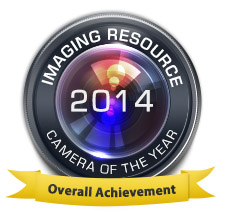
Nor are pin-sharp images the only reason to opt for the Nikon D810. More and more these days, professional photographers are expected to turn in not just stills at the end of a shoot, but also video -- and the D810 is now a much more capable video shooter than its predecessors. For one thing, you can now record compressed video to an internal card at the same time as capturing uncompressed video on an external device via the HDMI port. You can also use Nikon's clever Power Aperture function even when recording to the internal cards, plus features like zebra striping, a flat Picture Control suitable for post-capture grading, highlight-weighted exposure metering, a built-in stereo microphone and a wind cut filter. Together, they make it much easier than ever to get the video results you're after without the need to buy a second camera.
But perhaps the most important thing is that all of these changes build on the long-proven and well-loved design of the earlier models. If you're a pro, you don't want to have to relearn everything from scratch when you upgrade: You want your new camera to feel familiar as quickly as possible. And that's just what the Nikon D810 achieves: It's an even better flagship that you'll be right at home with from the minute you upgrade! All in all, the Nikon D810 is a near-perfect combination of features, image quality and ergonomics; well-deserving of this year's overall Camera of the Year award.
Buy from Adorama | Buy from Amazon | Buy from B&H Photo
Camera of Distinction, Overall Achievement: Panasonic LX100
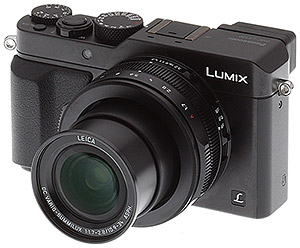
Panasonic's LX100 already won our Camera of the Year for the Best Premium Compact camera. In fact, we noted "Not only is it the best Premium Compact camera of 2014, it's probably the best premium compact camera ever." With words like those, it's no surprise some of us at IRHQ argued for it to win the Camera of the Year Award. Ultimately, the D810 beat it out for top honors, but make no mistake: The LX100 is a very solid Camera of Distinction, and should be at the top of any photographer's list.
While the LX100 can't match the small size of Sony's RX100 series, it features a sensor twice the size of that found in the RX100 series (RX100 vs LX100; RX100 II vs LX100; RX100 III vs LX100). And while it has fewer pixels, this is actually a benefit in some respects, as the pixel pitch approaches that of some APS-C DSLRs, allowing for great noise levels and dynamic range.
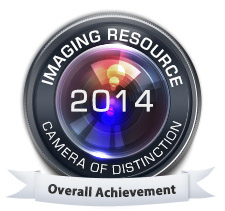
And Panasonic stacks up impressive firsts with the LX100: It features the largest sensor ever seen in a compact camera with an f/1.7 zoom lens and the largest sensor ever seen in a compact camera with an EVF. The LX100 really stands alone in its combination of lens, sensor and viewfinder. And we'd be remiss if we didn't mention that the little camera shoots 4K video, another first for a compact camera.
Panasonic priced the LX100 at a premium relative to all competitors: $200 more than Canon's G7X (G7X vs LX100), $150 more than Canon's G1X Mark II (G1X Mark II vs LX100) and $100 more than Sony's RX100 III (RX100 III vs LX100). But the functionality, image quality and usability of this camera are so far ahead of all comers that the premium is well deserved. The LX100 is an easy choice for a Camera of Distinction in our Overall Achievement category.
Buy from Adorama | Buy from Amazon | Buy from B&H Photo
Camera of Distinction, Overall Achievement: Sony A7 II
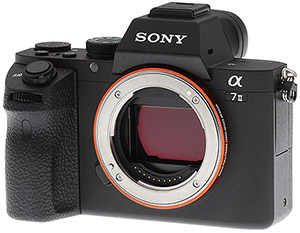
Sony came out swinging last year with the introduction of the A7 and A7R full-frame mirrorless cameras. With large, high-resolution sensors and svelte shape, these cameras gave the bigger full-frame DSLRs a run for their money. The Sony A7S subsequently put high-ISO kings, like the Nikon D4S, on notice as well. The initial duo of A7R and A7 was so groundbreaking and impressive that we gave them the top honors in our 2013 Camera of the Year awards.
Not content to rest on their laurels, Sony updated the "base-model" A7 camera this year with the aptly-named Sony A7 II, which included the world's first 5-axis sensor-shift image stabilization system in a full-frame ILC. While similar to the 5-axis system seen in Olympus OM-D cameras, Sony made a convincing case to us that the A7 II's stabilization technology is all new, and 100% the result of Sony engineering. In our initial testing, we've found the stabilization system works extremely well, making the A7 II an obvious choice for low-light shooters and videographers alike.

While it keeps the same sensor and processor from the original A7, the A7 II (A7 II vs A7) does have a number of other improvements, both inside and out, including a more comfortable grip and re-positioned ergonomic controls and dials. The construction is now full magnesium instead of a mix of magnesium and plastic panels, and video shooters are rewarded with a number of higher-end features borrowed from the A7S.
The Sony A7 II announcement came rather late in the year, and as such, the camera is still undergoing our rigorous review process. However, our initial investigation into the A7 II's image quality and sensor-shift image stabilization has returned impressive results. The Sony A7 II took the top spot in this year's Enthusiast Mirrorless category, and given the A7-series' track record in the past, we are very confident that the Sony A7 II deserves recognition in our Overall Achievement category as one of the best cameras of 2014.
Body Only: Buy from Adorama | Buy from Amazon | Buy from B&H Photo
Kit with 28-70mm Lens: Buy from Adorama | Buy from Amazon | Buy from B&H Photo
Camera of the Year, Best New Technology: Panasonic GH4
For the Depth from Defocus Technology
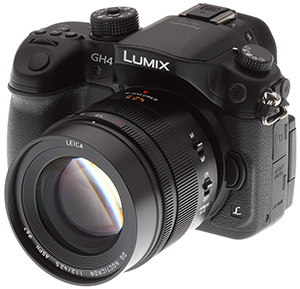
Autofocus has always been an area where mirrorless has had to play catch-up with conventional mirror-based SLRs and their phase-detect AF systems. Phase-detect AF has the advantage that the camera knows not only that a subject is out of focus, but roughly how far and in what direction it has to rack the lens to bring it into focus. With the contrast-detect AF found in many mirrorless cameras, focusing is an iterative process of checking to see how crisp an image is (how much local contrast), making a small lens adjustment, and then checking crispness again. There's no focal-distance information involved, just a measure of how much better or worse focus became from one increment to the next.
Some mirrorless cameras like the Olympus E-M1 (E-M1 vs GH4) and Sony A7 II (A7 II vs GH4) added on-chip phase-detect elements, and these often help a lot, but can have limitations in low light as well, given how much smaller the imager pixels are than those in SLR's standalone AF sensors. There are also consequences when it comes to 4K video, as the reduced brightness (or possibly absence of image signal altogether, depending on the sensor architecture) in the phase-detect pixels needs to be compensated for on the fly.
In 2014, Panasonic made practical for the first time a technology that achieves much of the speed of phase-detect AF, without the need for special focus pixels on the image sensor. Their Depth From Defocus (DFD for short) system takes advantage of detailed knowledge of each lens' bokeh (out of focus image characteristics) and heaps of processing power to determine both the direction and amount of focus error from changes in blur characteristics caused by small changes in lens focus setting. Rather than needing to continually move the lens and check local contrast as with conventional contrast-detect focusing, DFD can tell from the before/after differences from a single lens movement both in which direction and how far it needs to move the lens to get very close to the ultimate focus setting. Once there, it takes just a minor correction to achieve final focus.
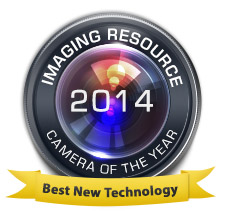
It turns out that the general principles of DFD have been known in the industry for years, but no one had previously figured out how to reduce it to practice in a form that would be both fast and accurate enough to use in a camera's AF system. Panasonic's engineers have done just that, though, and the result is a very sure-footed AF system in the Panasonic GH4 (the first camera to incorporate DFD technology.)
You can read more about the details of how DFD works in our technology overview of the GH4, and in much greater depth in an interview IR Founder and Publisher Dave Etchells conducted with Panasonic senior technical staff at the annual CP+ show Yokohama in February 2014. You can also see a comparison between the GH4 with DFD and the earlier GH3 without it in this video, at about the 1:03 mark.
A lot of times, success with technology isn't just about having an idea, but rather about making it work in practice. That's just what Panasonic has done with Depth from Defocus autofocusing, turning decades-old knowledge into very tangible benefits for present-day photographers.
Body Only: Buy from Adorama | Buy from Amazon | Buy from B&H Photo
Kit with YAGH Interface: Buy from Adorama | Buy from Amazon | Buy from B&H Photo
Camera of the Year, Most Unique New Camera: Sigma DP2 Quattro
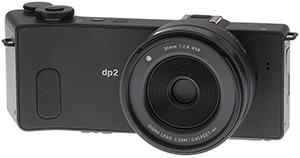
We didn't have to think too long or hard to pick this year's winner in the "most unique" category; the Sigma dp2 Quattro is not only one of the most unusual-looking cameras you're likely to encounter, but also represents a further advancement of Sigma's already-unique Foveon sensor technology. Using the light-absorption characteristics of the silicon sensor material itself, Foveon's tech delivers full red, green, and blue image data at every pixel location, rather than spread out across multiple pixels, as in conventional sensors with color filter arrays. The benefit has always been dramatically more image information per pixel, and a "look" to images captured with it that some have called more three-dimensional than those from other cameras. The downside has been lower light sensitivity for equivalent noise levels than conventional devices.
With their "Quattro" technology, Sigma/Foveon have gained close to a full EV in light sensitivity without losing any of the full RGB per-pixel data, through a combination of a sensor structure with multiple, overlapping pixel resolutions and some tricky math. Quattro sensors have green and red pixels four times the size of the blue ones, significantly reducing noise levels in those channels, while the aforementioned fancy math manages to sort out all the data into RGB image information with the same 19.6 megapixel resolution as the blue channel. In fact, the nominally 20-megapixel Quattro sensor (20 million blue pixels, 4.9 million each of red and green) rivals the resolution of sensors using conventional Bayer-striped arrays with significantly higher pixel counts.
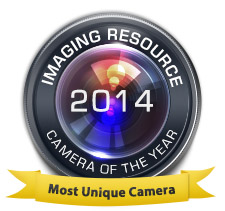
The first camera implementing the new Quattro sensor technology was the Sigma dp2 Quattro, unveiled at CP+ in February of this year. The dp2 Quattro looks like no other camera you've seen, with a wide, flat body having a grip on one end and the lens more or less on the other. Part of the reason for the unusual design is doubtless the amount of processing circuitry packed inside, needed because of how compute-intensive the process of sorting out the RGB color information is. Sigma's President Kazuto Yamaki shared with us another reason for the design, though; namely that the wide, two-handed grip the design encourages helps with camera stability, so users can take full advantage of the resolution the camera provides.
Sigma has made some pretty bold claims for the system's output, stating that the dp2 Quattro's sensor can actually match the resolution of a conventional 40-megapixel Bayer-striped array. We were pretty skeptical on that front, but images Sigma showed us at the CP+ show in Japan seemed to support the conclusion. Subsequent tests in our own lab with our own targets and lighting indicate the effective resolution is much, much higher than the nominal 19.6 megapixel count would suggest. And, despite somewhat higher luminance artifacts, the DP2 Quattro does indeed rival cameras like the D800, which have significantly greater pixel counts.
Buy from Adorama | Buy from Amazon | Buy from B&H Photo
Imaging Resource Cameras and Lenses of the Year Awards
This is final part of our five-part series on the Cameras and Lenses of the Year Awards for 2014. We previously announced our picks for the Best Entry-Level Cameras of 2014, Best Lenses of 2014, Best Compact Cameras of 2014 and Best Pro & Enthusiast Cameras of 2014. Check out all our choices and let us know if you agree or disagree!!
Best Entry-Level Cameras of 2014
Best Professional & Enthusiast Cameras of 2014
Camera of the Year, 2014 (and Special Awards) (this page)